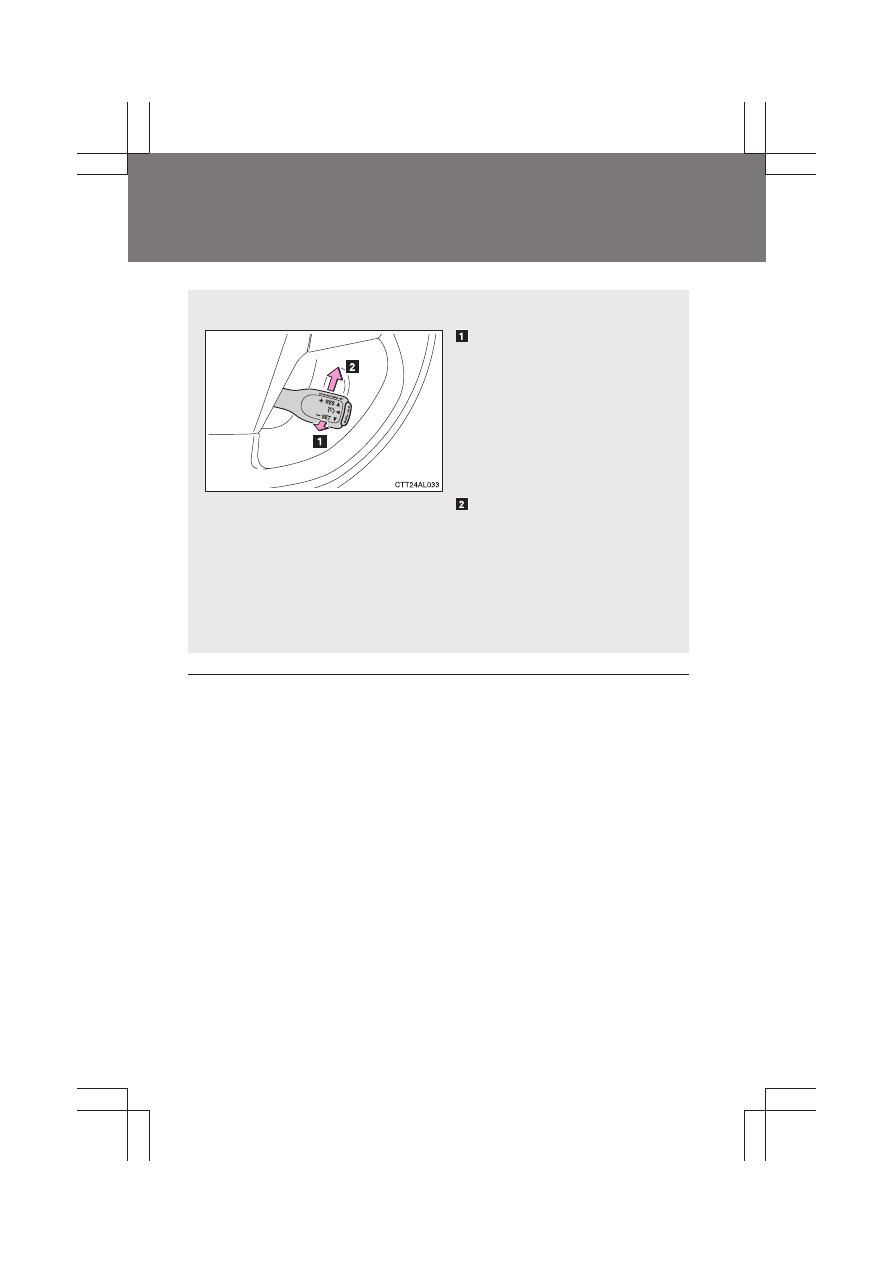Toyota Matrix (2014 year). Instruction - part 10

150
2-4. Using other driving systems
MATRIX_U
■
Cruise control can be set when
●
Automatic transmission:
The shift lever is in the D or range 3 (standard type), or in the D or range
4 or higher of S has been selected (multi-mode type).
●
Vehicle speed is above approximately 25 mph (40 km/h).
■
Accelerating
The vehicle can be accelerated normally. After acceleration, the set speed
resumes.
■
Canceling and resuming the constant speed control
Pulling the lever toward you
cancels the constant speed
control.
The speed setting is also can-
celed when the brakes are
applied or the clutch pedal
(manual transmission only) is
depressed.
Pushing the lever up
resumes the constant
speed control.
Resuming is available when
the vehicle speed is more
than approximately 25 mph
(40 km/h).